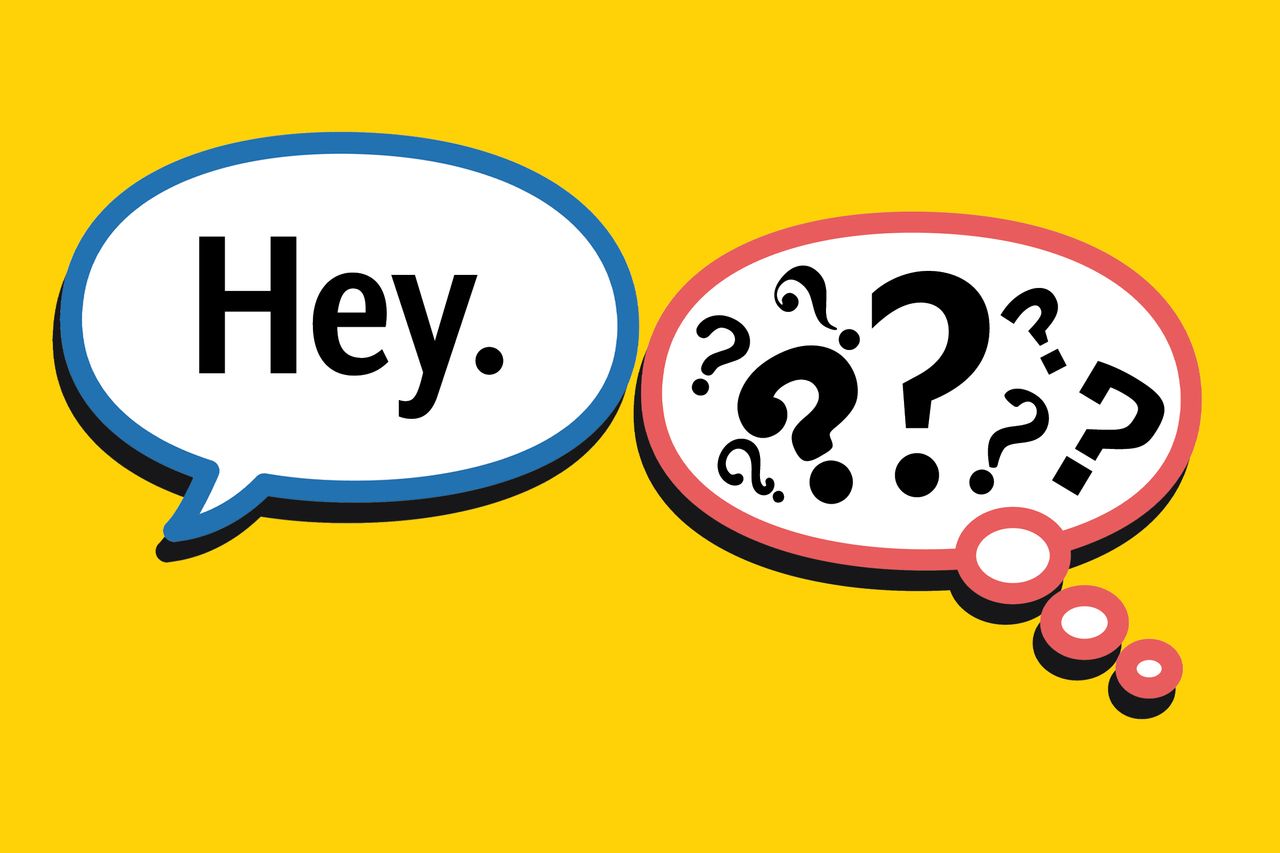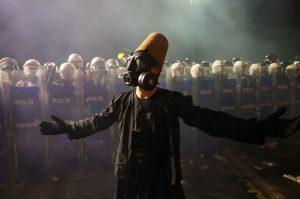Harrison Luongtran’s three-letter missives strike fear into the hearts of his colleagues at the Lucky Generals ad agency in New York.
Hey .
“My mind goes to the worst places,” says Atheina Hasbani, a 31-year-old account director who works with Luongtran, a creative director. There is no other information in the Slack instant message as she waits for the proverbial other shoe to drop. “It’s like, ‘Am I fired? Am I in trouble? Is your mom OK?’”
The hey-and-wait instant-message phenomenon comes in other iterations: ‘hi,’ ‘hi there,” “hi-hi,” “hiya” and “hey-o!” But the effect is the same. While the quick-drop salutation is often innocuous, it sends recipients into a tizzy, fearing the worst.
It also has a name: Hey hanging.
The “hey” might arrive on Slack, Microsoft Teams or Google Chat, or over text . Bryan Robinson, a psychotherapist and author of a book on hybrid work, says the word can engage a fight-or-flight response. “The brain has to know ‘What’s going to happen?’ for survival,” he says, and it often jumps to the worst-case scenario. “Our minds go, ‘I’m in hot water.’”
For Hasbani, follow-ups to Luongtran’s recent “hey” messages included a request for a link to a presentation and a question about when she’d be in the office so they could collaborate. While Hasbani doesn’t report to Luongtran, he is more senior and can kill ideas or kick concepts back for additional work, raising the stakes of his ambiguous greetings.
“If it’s plain ‘hey’ or ‘hi,’ I’m going down a terrible rabbit hole,” she says.
Luongtran, who is 42, says in his defense that a lot of his co-workers are younger. “Apparently, there are a lot of rules,” he says.
As workers feel pressure to do more at a faster clip, employees and bosses expect quick answers from colleagues, even when they’re not together. That dynamic has supercharged real-time conversations online.
Instant messaging is “the Red Bull of communication,” says Tracy Brady, senior vice president of communications for a cannabis company. “It’s that back and forth, you and me, right now, how do I get you to pay attention.”
Employees spend nearly 90% of their workweek communicating across multiple channels, according to a 2023 Harris Poll survey of more than 1,200 workers and executives. One in four said they experience miscommunication multiple times a day, according to the report, which was conducted on behalf of proofreading software company Grammarly.
Fiana Tulip, a brand strategist and marketing consultant in New York, knows the drill whenever she receives a message from Robyn Jackson Malone, who runs her own public relations agency in Chicago. The two sometimes collaborate on projects for the same client. To get her friend’s attention, Malone has a tendency to text “hey” to Tulip, without further information.
“It drives me batty,” Tulip says. She started taking screenshots of the hey-hanging offenses, and several weeks ago brought it up in a casual conversation about work.
Tulip shared her photos, including a “Hey hey” written at 1:10 p.m. on a Monday. Tulip refused to respond until she got more information. Malone’s next note finally came at 2:28 p.m. “Hey.. wanna get you engaged on this project… .what’s your rate?”
Malone defends hey hanging as a way to ease into someone’s day.
“It’s kind of rude to jump into someone’s texts and word-vomit whatever I want,” she says. “But now I’m seeing it’s a thing that people don’t necessarily love.”
Corporate communicators say part of the problem is that instant-messaging forums at work are still relatively new. Microsoft says its heaviest users now send and receive about 150 chats a day—gaining on the more than 250 emails a day they receive. Slack says 700 million messages are now sent across its channels each day. Discord, which got its start in the gaming community, is increasingly used among friend groups at work.
Unlike emails, which generally are longer and don’t require an immediate response, instant messaging carries the weight of a real-time back and forth. And while workers have fine-tuned their email protocol—avoid all-caps, strange fonts and unnecessary reply-alls—workplace instant-messaging is still the Wild West.
Then there are sprayers—those who email, call and instant message all at once.
“There doesn’t seem to be any clear etiquette about how to converse anymore,” says Kate Buchanan, who helps lead workforce innovation initiatives for software company Autodesk . Still, she admits to writing “hi” or “hey” to colleagues from time to time, then getting distracted or not needing the information and leaving them hanging.
After what felt like a constant thread of hey-hanging at work in recent weeks, Madison Kanna, a senior software engineer in the healthcare department at Walmart , reached out for advice on X: “Someone messages you ‘hi’ on slack/discord. What is the right response?”
Some respondents suggested she not reply. Others felt it wasn’t such a big offense. A few pointed to a simple website started two years ago, nohello.net, which has a few tips with a plea: “please don’t say just hello in chat.”
“Just ask the question!” says the site.
When colleagues communicate in a way that feels irksome, it’s important to let them know how it’s making you feel, says Constance Hadley, a professor of management and organizations at Boston University Questrom School of Business.
“You can say: I was in the middle of deep work when you pinged me ‘hey,’” she says. “Even if ‘hey’ is your love language, other people are not receiving it that way.”
Write to Anne Marie Chaker at Anne-Marie.Chaker@wsj.com



